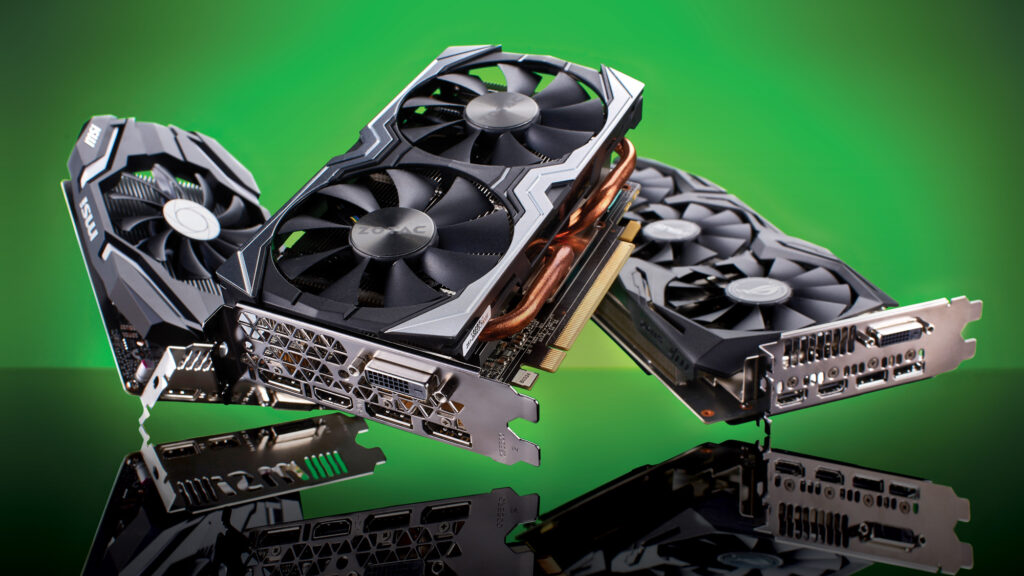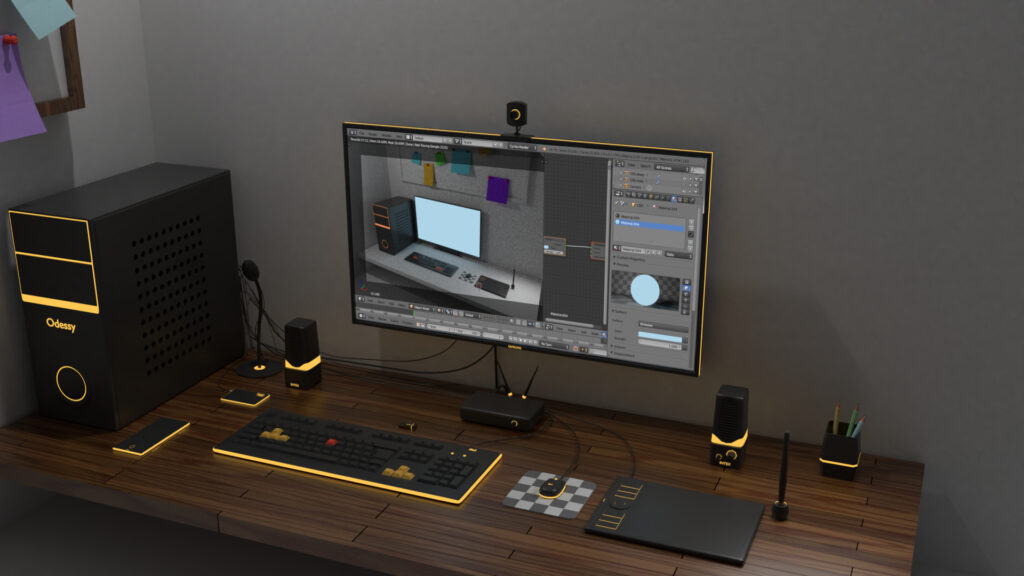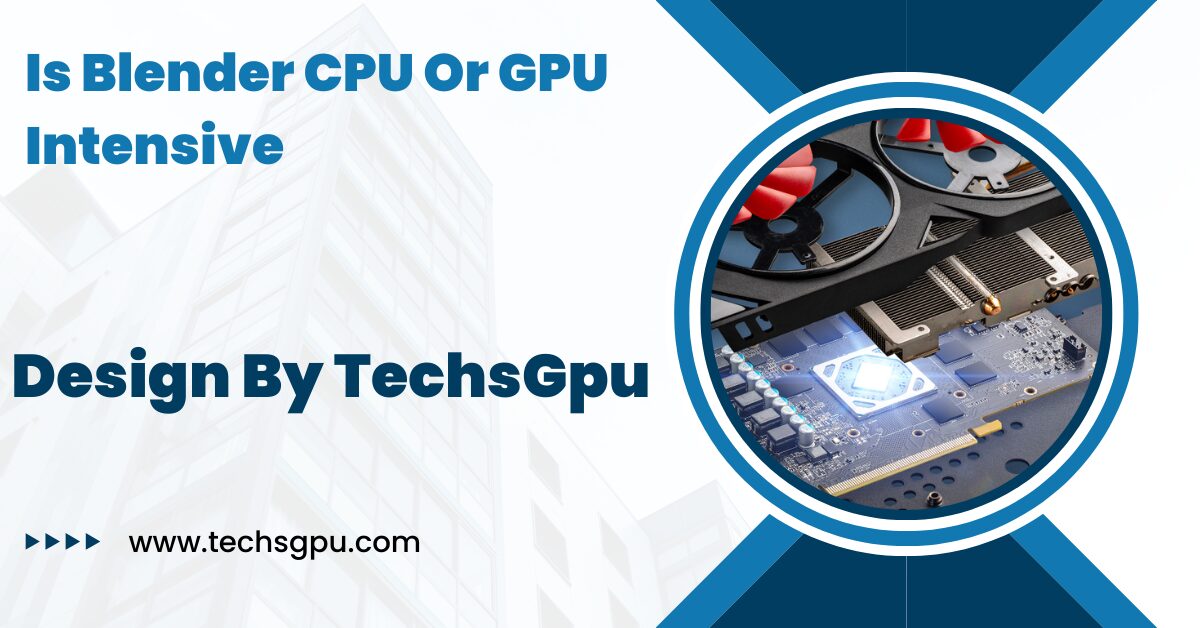Blender uses both CPUs and GPUs, with Cycles being CPU-intensive for accurate ray tracing and Eevee being GPU-intensive for real-time rendering.
Blender, as a versatile 3D creation software, harnesses the computational power of both CPUs and GPUs to execute a wide range of tasks, from rendering photorealistic scenes to simulating complex physics dynamics.
Understanding the specific roles and optimizations for each hardware component is crucial for achieving optimal performance and efficiency in Blender workflows.
Understanding Blender’s Rendering Engines:
Blender employs two primary rendering engines, each tailored to different aspects of 3D rendering:
Cycles Renderer: CPU Intensive

Blender’s Cycles renderer is renowned for its ability to produce high-quality, photorealistic images through ray tracing. Ray tracing involves simulating the path of light as it interacts with objects in a scene, calculating reflections, refractions, and shadows with precision.
Due to the intricacy of these calculations, Cycles heavily relies on the CPU’s processing capabilities. The CPU’s strong single-core performance is particularly advantageous for tasks that demand accurate ray tracing and sophisticated lighting effects.
Artists and professionals working on architectural visualization, product design, and film animation often utilize Cycles for its ability to deliver realistic rendering results.
Eevee Renderer: GPU Intensive:
In contrast to Cycles, Blender’s Eevee renderer focuses on real-time rendering and interactive viewport feedback. Eevee utilizes the GPU extensively to achieve fast, responsive previews directly within Blender’s viewport.
Real-time rendering capabilities are crucial for tasks that require immediate visual feedback, such as interactive game development, virtual reality (VR) experiences, and rapid prototyping.
The GPU’s parallel processing architecture excels in handling the complex computations needed for dynamic lighting, shader effects, and real-time updates, making Eevee an ideal choice for projects that prioritize interactivity and iterative design processes.
Optimizing Performance for Blender:
Achieving optimal performance in Blender involves strategic hardware selection and software configuration:
Choosing the Right Hardware:
Selecting the appropriate hardware components is essential for maximizing Blender’s performance across different tasks:
- CPU Selection: For CPU-intensive workflows in Blender, such as rendering complex scenes in Cycles or simulating physics dynamics, opt for processors with high core counts and efficient single-core performance. CPUs like the AMD Ryzen 9 or Intel Core i9 series offer significant multi-threaded performance gains, enabling faster rendering times and smoother simulation outcomes.
- GPU Selection: When optimizing Blender for GPU-intensive tasks, such as real-time rendering in Eevee or GPU-accelerated rendering in Cycles, prioritize graphics cards with ample VRAM and robust CUDA or OpenCL support. Modern GPUs like the NVIDIA RTX series or AMD Radeon RX series provide substantial compute power and memory bandwidth, enabling faster rendering speeds and enhanced visual fidelity.
Also Read: GPU Manufacturers Tier List – NVIDIA, AMD, and More!
Software Configuration:
Blender provides extensive control over rendering settings, allowing users to fine-tune parameters to optimize CPU or GPU utilization based on specific project requirements.
Adjusting tile sizes, thread counts, and render device settings can significantly impact performance and efficiency across different rendering engines and project types.
Workflow Optimization Strategies:
To streamline workflows and enhance productivity in Blender, consider implementing the following strategies:
Hybrid Rendering Approaches:

Utilize hybrid rendering techniques that leverage both CPU and GPU strengths to optimize overall performance. For instance, allocate GPU resources for real-time viewport previews and interactive scene manipulation, while leveraging CPU resources for final, high-quality renders in Cycles.
This hybrid approach ensures a seamless workflow transition from design iteration to final production, balancing rendering speed with rendering quality.
Utilizing Render Farms and Cloud Services:
For large-scale projects or time-sensitive deadlines, leverage render farms or cloud rendering services to distribute rendering workloads across multiple machines.
Render farms offer scalable solutions for accelerating render times and optimizing resource utilization, allowing artists and studios to handle complex rendering tasks efficiently.
Cloud-based rendering platforms such as RenderStreet, SheepIt!, and AWS Render Farm provide flexible options for managing rendering projects remotely, ensuring reliable performance and cost-effective scalability.
FAQs:
1. Which rendering engine in Blender is CPU intensive?
Blender’s Cycles renderer is CPU intensive, specializing in accurate ray tracing and high-quality rendering.
2. What kind of tasks benefit from Blender’s Cycles renderer?
Tasks such as architectural visualization, product design, and film animation benefit from Cycles due to its ability to produce realistic lighting and materials.
3. Is Blender’s Eevee renderer GPU intensive?
Yes, Blender’s Eevee renderer is GPU intensive, focusing on real-time rendering and interactive viewport feedback.
4. What are the advantages of using Blender’s Eevee renderer?
Eevee excels in tasks requiring immediate visual feedback, such as interactive game development, VR experiences, and rapid prototyping.
5. How should I choose the right CPU for Blender?
Opt for CPUs with high core counts and strong single-core performance, like AMD Ryzen 9 or Intel Core i9, for CPU-intensive tasks in Blender.
6. What GPUs are recommended for Blender’s GPU-intensive tasks?
GPUs with ample VRAM and robust CUDA or OpenCL support, such as NVIDIA RTX series or AMD Radeon RX series, are ideal for GPU-intensive tasks in Blender.
7. What software configurations can optimize Blender’s performance?
Adjusting tile sizes, thread counts, and render device settings in Blender can significantly optimize CPU or GPU utilization based on project requirements.
8. How can hybrid rendering approaches benefit Blender users?
Hybrid rendering techniques, combining CPU and GPU resources, optimize performance by using GPU for real-time previews and CPU for final renders.
9. What are render farms and how can they help in Blender projects?
Render farms distribute rendering tasks across multiple machines, reducing render times and enhancing productivity for large-scale Blender projects.
10. Which cloud rendering services are compatible with Blender?
Cloud services like RenderStreet, SheepIt!, and AWS Render Farm offer scalable solutions for managing Blender projects remotely, ensuring efficient rendering and cost-effectiveness.
Conclusion:
In conclusion, Blender efficiently leverages both CPU and GPU resources through its Cycles and Eevee rendering engines. By understanding the distinct roles of each engine and optimizing hardware configurations accordingly, users can achieve faster rendering times, smoother workflows, and higher-quality outputs. This balanced approach allows for superior performance in various 3D design and animation tasks, enhancing both productivity and creativity. Whether for architectural visualization, game development, or film animation, optimizing Blender’s performance is key to unlocking its full potential.
